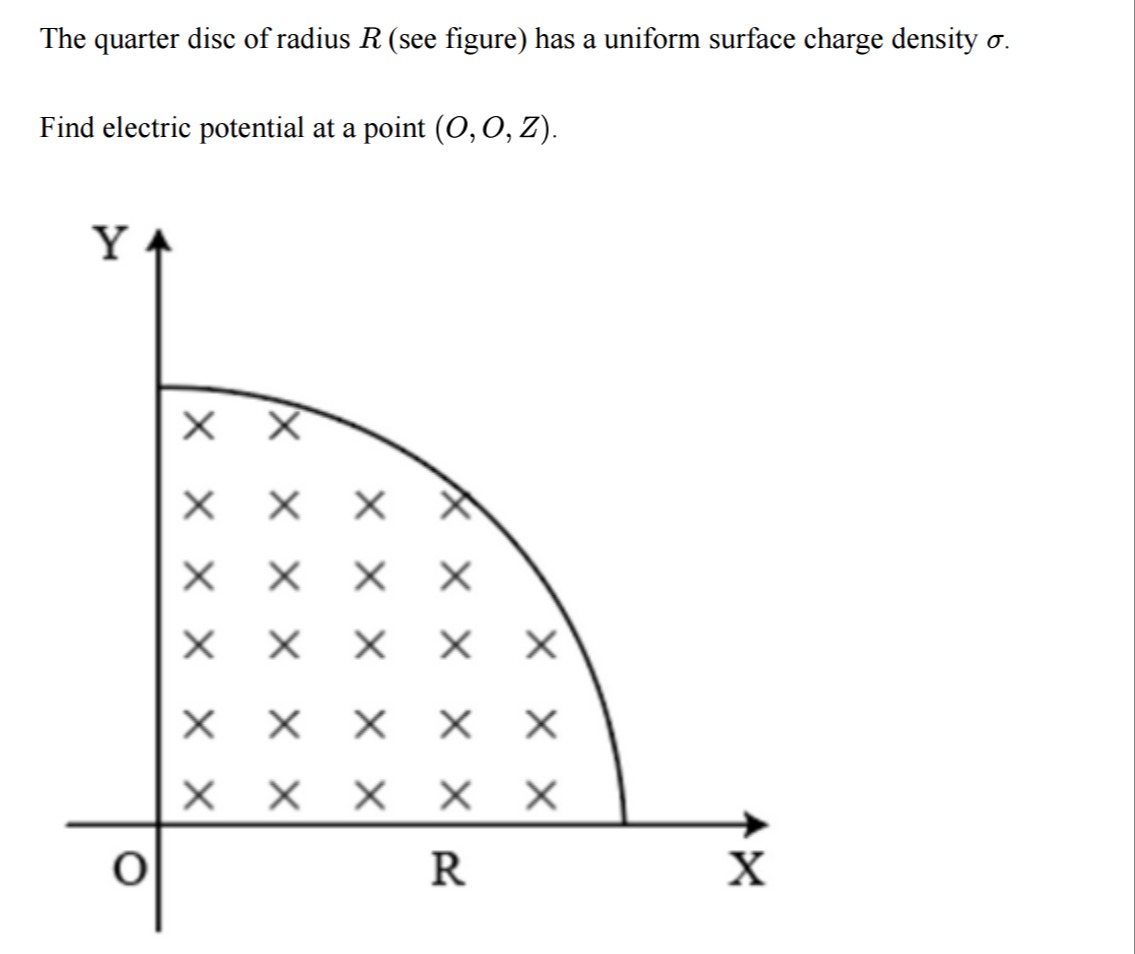Question
Question: The quarter disc of radius $R$ (see figure) has a uniform surface charge density $\sigma$. Find ele...
The quarter disc of radius R (see figure) has a uniform surface charge density σ.
Find electric potential at a point (O,O,Z).

V = \frac{\sigma}{8\epsilon_0}\left(\sqrt{R^2+Z^2}-Z\right)
Solution
Step-by-step Solution
- Set Up the Integral:
The quarter disc lies in the first quadrant of the xy-plane with uniform surface charge density σ. In polar coordinates, the disc is described by: r∈[0,R],θ∈[0,2π]. An infinitesimal element of area is: dA=rdrdθ.
- Potential Contribution:
The potential at (0,0,Z) due to an element of charge dQ=σdA is: dV=4πϵ01r2+Z2dQ=4πϵ01r2+Z2σrdrdθ.
-
Integrate Over the Quarter Disc:
V=4πϵ0σ∫02π∫0Rr2+Z2rdrdθ.First, integrate over θ:
∫02πdθ=2π.Now, the potential becomes:
V=4πϵ0σ⋅2π∫0Rr2+Z2rdr. -
Evaluate the Radial Integral:
Let:
I=∫0Rr2+Z2rdr.Use the substitution:
u=r2+Z2⇒du=2rdr.Therefore:
I=21∫Z2R2+Z2u−1/2du=21⋅[2u1/2]Z2R2+Z2=R2+Z2−Z. -
Final Expression:
Substitute I back:
V=4πϵ0σ⋅2π(R2+Z2−Z).Simplify:
4ππ=41and41⋅21=81,so:
V=8ϵ0σ(R2+Z2−Z).
Minimal Explanation of the Core Solution:
- Convert to polar coordinates.
- Write the potential dV=4πϵ01r2+Z2σrdrdθ.
- Integrate over θ (factor π/2) and over r using substitution u=r2+Z2.
- Final answer: V=8ϵ0σ(R2+Z2−Z).
